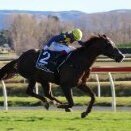-
Available Subscriptions
Galloping Chat
Thoroughbred Racing forum discussion.
4,350 topics in this forum
-
- 120 replies
- 7.4k views
-
- 1 reply
- 686 views
-
- 228 replies
- 19.7k views
-
- 3 replies
- 644 views
-
- 4 replies
- 980 views
-
- 29 replies
- 3.2k views
-
- 13 replies
- 1.3k views
-
- 16 replies
- 2k views
-
- 5 replies
- 1.7k views
-
- 28 replies
- 3.9k views
-
- 46 replies
- 3.3k views
-
- 10 replies
- 1.1k views
-
- 23 replies
- 2.6k views
-
- 2 replies
- 789 views
-
- 7 replies
- 1.4k views
-
- 37 replies
- 2.4k views
-
- 2 replies
- 682 views
-
- 76 replies
- 10.8k views
-
- 3 replies
- 845 views
-
- 4 replies
- 813 views
-
- 3 replies
- 752 views
-
- 12 replies
- 1.7k views
-
- 0 replies
- 667 views
-
- 7 replies
- 1.4k views
-
- 13 replies
- 1.9k views





